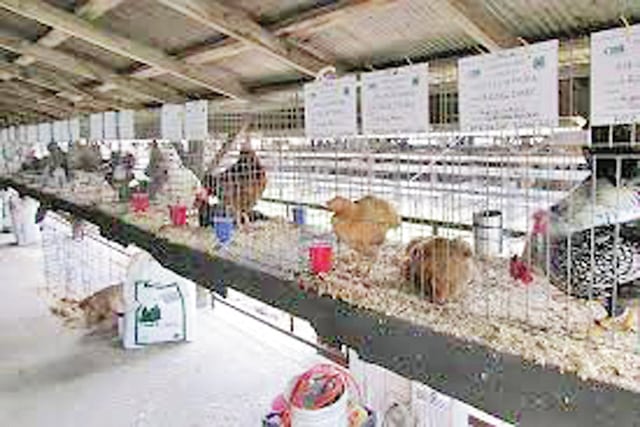The Ohio Department of Agriculture cancelled all live bird exhibitions at county and independent fairs in 2015 to protect Ohio’s $2.3 billion poultry industry from the avian flu outbreak affecting the United States earlier this year.
The cancellation, announced June 2 by Agriculture Director David T. Daniels, covers poultry and waterfowl exhibits and also extended to the Ohio State Fair and all other gatherings of birds for show or for sale, including auctions, and swap meets.
“This was a difficult decision because it means young people can’t show their birds at fairs, but it’s in the best interest of an industry that literally thousands of Ohio families and businesses depend on and which provides billions of dollars to our state’s economy,” Daniels said at the time. “The right move isn’t always the easy move, but this is the right move, especially when you see just how devastating the virus has been to other big poultry states like Iowa and Minnesota.”
For the first time at the Morrow County Fair, there will be no chickens, turkeys, ducks, geese or pheasants.
“The youth still have the opportunity to complete their projects,” said Becky Barker, County Director – 4H Youth Development Educator. “Because we can’t co-mingle birds, the kids are going to be doing a poster educational display and complete Skill-A-Thon, a knowledge project all livestock entries do each year. They will be displayed at the fair.”
Some youth did not have their birds when the state ban was announced because market broilers were not yet born. she said. Neither were ducks and geese, so these entries will be without photos of a ‘live’ project. For those who bought chicks from the extension office and raised them, they gained the hands-on experience. Barker said the ban potentially impacted 175 projects.
No poultry auction will be held this year, and this includes any feathered fowl.
Barker said the issue with poultry will be re-evaluated each year, and the ban was to ensure food production in Ohio and nationwide takes place safely.
“It could have been devastating to that industry and people that purchase eggs,” Barker reflected. According to ODA, Ohio ranks second in the nation in egg production and ninth nationally in turkey production. The state is home to 28 million laying chickens, 12 million broilers, 8.5 million pullets and 2 million turkeys. Ohio’s egg, chicken and turkey farms provide more than 14,600 jobs.
Along with the youths’ educational displays in the rabbit/poultry barn, the Ohio Poultry Association has put together display posters as well.
The ban came after an unprecedented outbreak of highly pathogenic avian influenza H5 linked to wild migratory birds gripped the U.S. poultry industry since December of 2014, affecting more than 44 million birds from commercial and backyard flocks at close to 200 locations in 15 states, according to the U.S. Department of Agriculture.
No cases of avian flu were reported in Ohio up, and the ban was intended as a proactive measure to keep the extremely contagious disease out of the state, ODA said in a statement. Wild or domesticated waterfowl can carry and spread the virus, but they do not show symptoms. The virus is not dangerous to humans, and poultry products are safe to eat.
Reach Randa Wagner at 419-946-3010, ext. 1803 or on Twitter@MorrCoSentinel.






